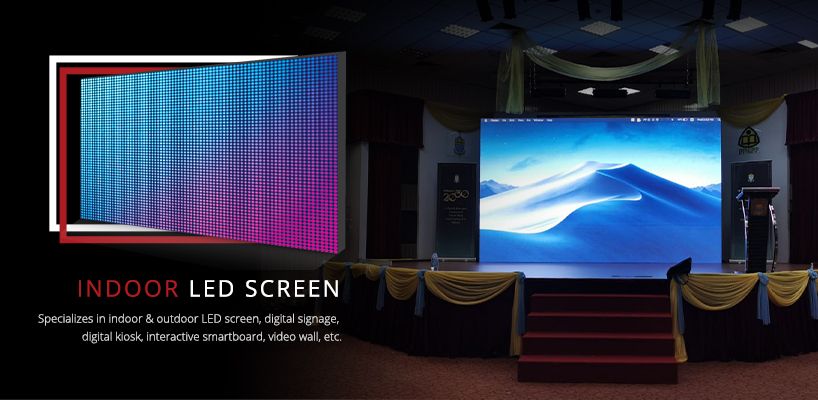
LED (light-emitting diode) screens are a type of display technology that uses light-emitting diodes to create an image. They have a number of advantages over traditional display technologies, including higher brightness, lower energy consumption, and longer lifespan. These qualities make LED screens a popular choice for a wide range of applications, including outdoor advertising, stage displays, and television broadcasting. In this blog, we'll take a closer look at LED screens and explore some of the key features and benefits of this technology.
One of the key advantages of LED screens is their high brightness. LEDs are able to produce a bright, consistent light output that is much higher than what is possible with traditional display technologies like LCD (liquid crystal display) or CRT (cathode ray tube). This makes LED screens ideal for use in outdoor environments, where high levels of ambient light can make it difficult to see other types of displays. Additionally, the high brightness of LED screens means that they can be used in a wide range of lighting conditions, from bright sunlight to low-light environments.
LED screens are also known for their low energy consumption. Unlike traditional display technologies, which rely on backlighting to produce an image, LED screens use individual light-emitting diodes to create an image. This means that LED screens are much more energy-efficient, as they are able to produce an image using only the energy needed to power the individual diodes. This not only makes LED screens more environmentally friendly, but it also helps to reduce operating costs for businesses and organizations that use them.
In addition to their high brightness and low energy consumption, LED screens have a number of other features that make them an attractive choice for a wide range of applications. For example, LED screens are known for their long lifespan. Because they do not use traditional bulbs, LED screens do not need to be replaced as frequently as other types of displays. This makes them a cost-effective choice for businesses and organizations that need to use displays on a regular basis.
LED screens are also highly customizable. They can be made in a wide range of sizes and resolutions, making them suitable for use in a variety of settings. Additionally, LED screens can be programmed to display a wide range of content, including video, text, and graphics. This makes them a versatile choice for businesses and organizations that need to display dynamic, real-time content.
One of the key benefits of LED screens is their ability to attract attention. Because they are bright and highly visible, LED screens are able to grab the attention of passersby and draw them in to view the content being displayed. This makes LED screens an effective tool for outdoor advertising and marketing, as well as for stage displays and other types of public events.
There are a number of factors to consider when choosing an LED screen. Some of the key considerations include the size of the screen, the resolution of the display, the viewing distance, and the type of content being displayed. Additionally, it is important to consider the environment in which the LED screen will be used, as this will impact the type of screen that is most appropriate.
Overall, LED screens are a highly effective and versatile display technology that is suitable for a wide range of applications. From outdoor advertising and stage displays to television broadcasting and digital signage, LED screens offer a number of benefits, including high brightness, low energy consumption, and long lifespan. With their ability to attract attention and display dynamic, real-time content, LED screens are a powerful tool for businesses and organizations looking to engage and inform their audiences.























